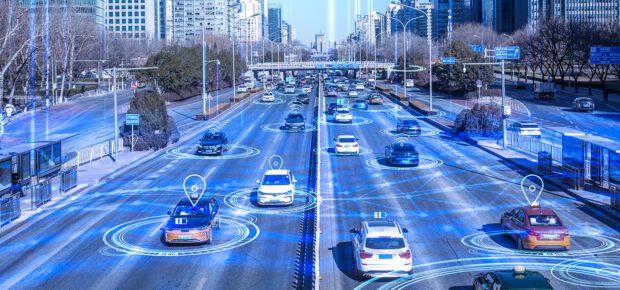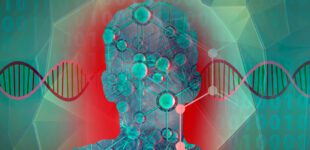February 28, 2024
Ever wondered how much data your car generates daily? With up to 200 sensors creating roughly 4TB of information, the depth and breadth of vehicle data collection are staggering. But what does it all mean for you and your driving experience?
Buckets of Data
The computing power of your car is immense. It’s so big, it might be helpful to put the data processed by it into five buckets.
- Infotainment System: This is the system that operates your radio, and also interfaces with your smartphone, GPS and the car apps your smartphone uses. This system may store information about who you called, where you shop, what routes you take, as well as text messages.
- Driving Sensors: Cars have relied on various sensors for decades, most of these related to driving. When you push the brake, a sensor is involved. When you turn the steering wheel, a sensor is involved. All of these sensors create data.
- Perceptual Systems: With the rise of autonomous capabilities, cars increasingly come equipped with sensors that allow them to perceive the environment around them. Most new vehicles have a front-facing camera, as well as a rear one, and short-range radar on the corner that serve as alert sensors when changing lanes. More advanced vehicles may contain LiDAR sensors. This data helps the car “know” where it is in relation to the environment.
- Diagnostic Data: Usage and diagnostic data may also be collected. This might include engine performance. Makers of electric vehicles may collect information on how much battery power a vehicle has left, which can be used to direct drivers to the most convenient charging station.
- Biometric Data: Cars increasingly use various sensors to assess the behavior of drivers because as cars become increasingly autonomous, they still require human oversight. Manufacturers, worried that users might be lulled into a false sense of security, use sensors to make sure drivers are keeping their eyes on the road, and their hands on the steering wheel. Internal cameras can also monitor drivers for signs of impairment or fatigue.
Connecting it all are multiple mini-computers called electronic control units, or ECUs, and a lot of software. A typical car may use 100 million lines of code.
Automakers are “starting to see and treat the car as software, running on hardware-in-motion,” said Bilin Aksun-Guvenc, IEEE member. “hence the term software-defined vehicle.”
What’s Driving the Trend
Experts say that a few factors are at play when it comes to the digitization of driving.
The use of sensors and data in cars has led to big gains in fuel efficiency and the reduction of emissions. Safety and the reduction of distracted driving are also selling points for the integration of sensors. In many cases, some safety features, like backup cameras are required for new vehicles in some countries.
Perhaps the biggest demand for data, however, lies in the development of autonomous vehicles. Data is the lifeblood of artificial intelligence. Without it, the driving algorithms that enable autonomous driving can’t be trained.
“Autonomous cars need data for safe operation,” said IEEE Senior Member Santhosh Sivasubramani.
What’s Next
The computerization in cars shows no signs of slowing down. One idea being discussed is geo-fencing, which would create a virtual fence that prevents work vehicles or delivery trucks from leaving a certain area, or automatically limits speeds in downtown areas or schools.Some devices are even coming online to help monitor drivers’ heartbeats.






 Meaningful Momentum or Running in Place?
Meaningful Momentum or Running in Place? AI Through Our Ages
AI Through Our Ages Liquid Infrastructure: Our Planet's Most Precious Resource
Liquid Infrastructure: Our Planet's Most Precious Resource The Impact of Technology in 2025
The Impact of Technology in 2025 Quantum and AI: Safeguards or Threats to Cybersecurity?
Quantum and AI: Safeguards or Threats to Cybersecurity? Why AI Can't Live Without Us
Why AI Can't Live Without Us Bits, Bytes, Buildings and Bridges: Digital-Driven Infrastructure
Bits, Bytes, Buildings and Bridges: Digital-Driven Infrastructure Impact of Technology in 2024
Impact of Technology in 2024 Emerging AI Cybersecurity Challenges and Solutions
Emerging AI Cybersecurity Challenges and Solutions The Skies are Unlimited
The Skies are Unlimited Smart Cities 2030: How Tech is Reshaping Urbanscapes
Smart Cities 2030: How Tech is Reshaping Urbanscapes Impact of Technology 2023
Impact of Technology 2023 Cybersecurity for Life-Changing Innovations
Cybersecurity for Life-Changing Innovations Smarter Wearables Healthier Life
Smarter Wearables Healthier Life Infrastructure In Motion
Infrastructure In Motion The Impact of Tech in 2022 and Beyond
The Impact of Tech in 2022 and Beyond Cybersecurity, Technology and Protecting Our World
Cybersecurity, Technology and Protecting Our World How Technology Helps us Understand Our Health and Wellness
How Technology Helps us Understand Our Health and Wellness The Resilience of Humanity
The Resilience of Humanity Harnessing and Sustaining our Natural Resources
Harnessing and Sustaining our Natural Resources Creating Healthy Spaces Through Technology
Creating Healthy Spaces Through Technology Exceptional Infrastructure Challenges, Technology and Humanity
Exceptional Infrastructure Challenges, Technology and Humanity The Global Impact of IEEE's 802 Standards
The Global Impact of IEEE's 802 Standards Scenes of our Cyber Lives: The Security Threats and Technology Solutions Protecting Us
Scenes of our Cyber Lives: The Security Threats and Technology Solutions Protecting Us How Millennial Parents are Embracing Health and Wellness Technologies for Their Generation Alpha Kids
How Millennial Parents are Embracing Health and Wellness Technologies for Their Generation Alpha Kids Space Exploration, Technology and Our Lives
Space Exploration, Technology and Our Lives Global Innovation and the Environment
Global Innovation and the Environment How Technology, Privacy and Security are Changing Each Other (And Us)
How Technology, Privacy and Security are Changing Each Other (And Us) Find us in booth 31506, LVCC South Hall 3 and experience the Technology Moon Walk
Find us in booth 31506, LVCC South Hall 3 and experience the Technology Moon Walk Virtual and Mixed Reality
Virtual and Mixed Reality How Robots are Improving our Health
How Robots are Improving our Health IEEE Experts and the Robots They are Teaching
IEEE Experts and the Robots They are Teaching See how millennial parents around the world see AI impacting the lives of their tech-infused offspring
See how millennial parents around the world see AI impacting the lives of their tech-infused offspring Take the journey from farm to table and learn how IoT will help us reach the rising demand for food production
Take the journey from farm to table and learn how IoT will help us reach the rising demand for food production Watch technical experts discuss the latest cyber threats
Watch technical experts discuss the latest cyber threats Explore how researchers, teachers, explorers, healthcare and medical professionals use immersive technologies
Explore how researchers, teachers, explorers, healthcare and medical professionals use immersive technologies Follow the timeline to see how Generation AI will be impacted by technology
Follow the timeline to see how Generation AI will be impacted by technology Learn how your IoT data can be used by experiencing a day in a connected life
Learn how your IoT data can be used by experiencing a day in a connected life Listen to technical experts discuss the biggest security threats today
Listen to technical experts discuss the biggest security threats today See how tech has influenced and evolved with the Games
See how tech has influenced and evolved with the Games Enter our virtual home to explore the IoT (Internet of Things) technologies
Enter our virtual home to explore the IoT (Internet of Things) technologies Explore an interactive map showcasing exciting innovations in robotics
Explore an interactive map showcasing exciting innovations in robotics Interactively explore A.I. in recent Hollywood movies
Interactively explore A.I. in recent Hollywood movies Get immersed in technologies that will improve patients' lives
Get immersed in technologies that will improve patients' lives